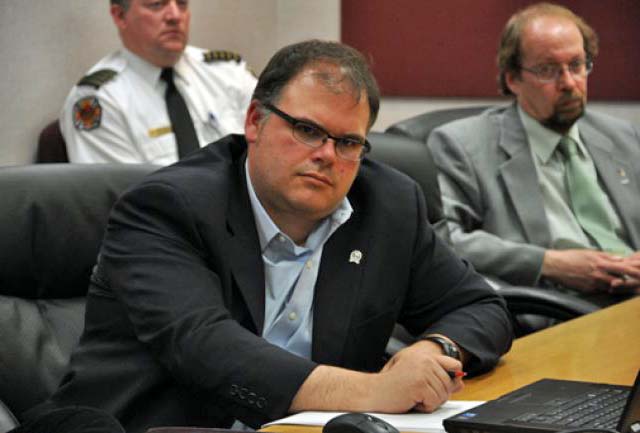|
Mike LoVecchio, director of government affairs with Canadian Pacific, addresses executive committee with information on CP's
safety operations within the community - 17 Mar 2014 Lisa Goudy.
18 March 2014
What's Involved in Railroad 101 Training
Moose Jaw Saskatchewan - Canadian Pacific (CP) does training with fire departments such as Moose Jaw and other emergency responders
called Railroad 101.
"What we talk about is how to recognize what rail line you're on because it's very important. There's a lot of rail lines and local fire departments
obviously know basically their territories. We show them how to identify the railway," said Doug Mayor, CP dangerous goods specialist for Manitoba and
Saskatchewan.
"We look at different parts and components of a tank, not to get into the technical data because it is quite involved. When we look at a derailment
happening with dangerous goods, the first most important thing is to find out what you're dealing with and do an assessment."
He said municipal and surrounding areas have emergency responders that might be on site before CP's emergency responders.
That's why it is important to have that training in place.
"We teach them how to read a train consist and how to read the waybills on a train consist to get immediate information, make whatever phone calls to
emergency centres that they need," said Mayor.
"We'll set up an incident command where collectively we'll work with the local fire departments, whether it be rural or a city fire department, and try to
set up different zones based on the commodity that's at risk."
Fire department personnel are not expected to do any of the hazardous work, but they might need to do initial assessments and discussions to "mitigate any
sort of risk that would present itself at a derailment," said Mayor.
"It gives a little more of an inside view of railway operations as opposed to arriving on a scene and really not knowing what to do," he
said.
"It's very high level."
Lisa Goudy.
   |


